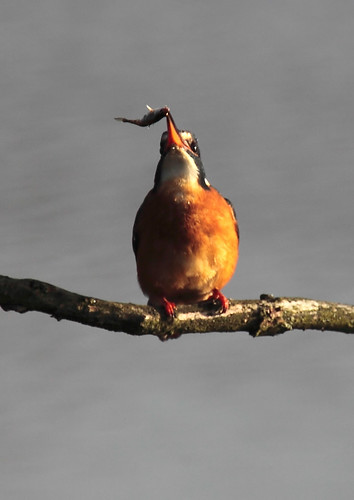When we first saw the millstream, it was clear as crystal and full of fish. We could see trout moving through the water, and Tim saw native crayfish scooting* around. Kingfishers (
Acedo atthis,
martin pêcheur),
flew to and fro, on one occasion taking a detour around the barn before going back to the stream.
Then suddenly, a couple of years ago, the water became cloudy. The waterweed was swamped by clinging grey mud. No more fish, no more crayfish. And no more Kingfishers. According to the River Technician, Yohann Sionneau, a local dairy farm was to blame, and judging by the muck they spread over the road from constant building work, that's very probable.
But since Yohann started work, the millstream has gradually cleared. There's still mud on the bottom, as can be seen if you chuck a pebble in, but the native weed and the fish are coming back. And this month, kingfishers too! The piercing whistle announces the passage of a blue bullet. When defrosting the freezer, Tim took some icefloes to the bridge for disposal (perfectly clean water, just a bit cold). As he dropped the largest over the parapet, he nearly brained a kingfisher flying underneath. This bird was followed by two more - they must have bred close by.
Yesterday we saw a kingfisher perching in the cherry suckers lining the bank outside our window. As usual, no camera to hand. As Tim tiptoed downstairs to get his camera, I watched it dive into the water for a small fish and hurtle back upstream out of sight. So - no pictures then.
Fortunately Tim's brother
Nick is an excellent wildlife photographer and has some stunning kingfisher pictures on
his Flickr site... like this one!

*A native crayfish, once, crawling along the stony bed of the ford!















